No building in Istanbul contains as many timelines as the Hagia Sophia. It is not merely a structure but a living archive of empire, worship, architecture, and contestation. Originally constructed as a Christian cathedral in 537 under Emperor Justinian I, transformed into a mosque in 1453 under Sultan Mehmed II, secularized into a museum in the 20th century, and most recently re-designated as a mosque in 2020, it remains one of the most symbolically charged buildings in the world.
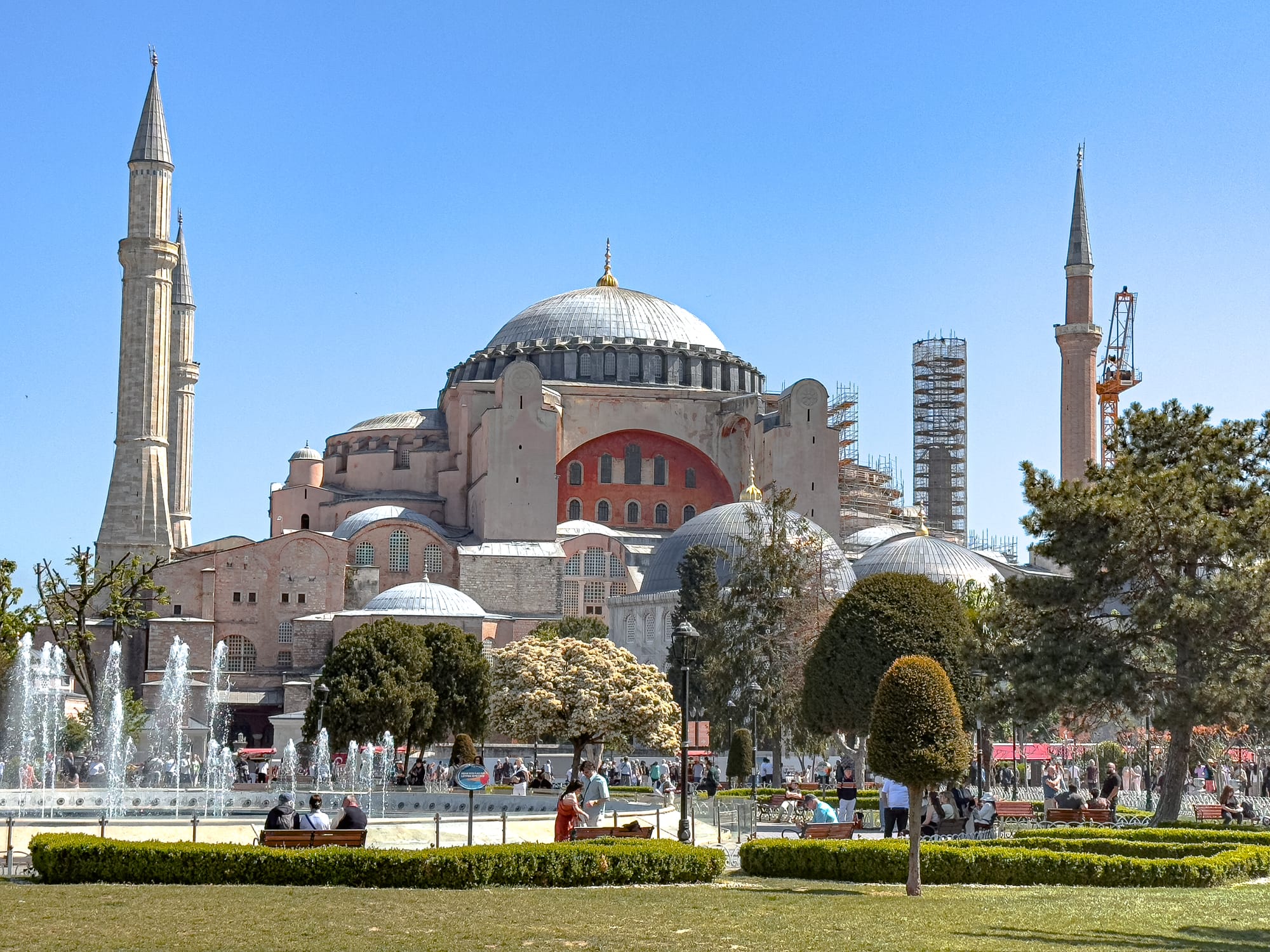
With such layered history, it draws in crowds from every corner of the world—curious travelers, art lovers, scholars, pilgrims, and those simply stunned into silence by its majesty. But with popularity comes the challenge of access. Lines outside the Hagia Sophia can be daunting. If you want to make the most of your visit and avoid long waits, we highly recommend booking a skip-the-line ticket here. It’s one of the few ways to ensure a calmer entry into such a monumental space.
From cathedral to mosque to museum—and back again
Hagia Sophia has stood at the heart of Constantinople/Istanbul for nearly 1,500 years. Commissioned by the Byzantine Emperor Justinian I and completed in just five years, its original purpose was to demonstrate the glory of Eastern Orthodox Christianity. At the time, its scale and engineering were unprecedented—particularly its vast central dome, which seemed to hover in space, unanchored by columns.
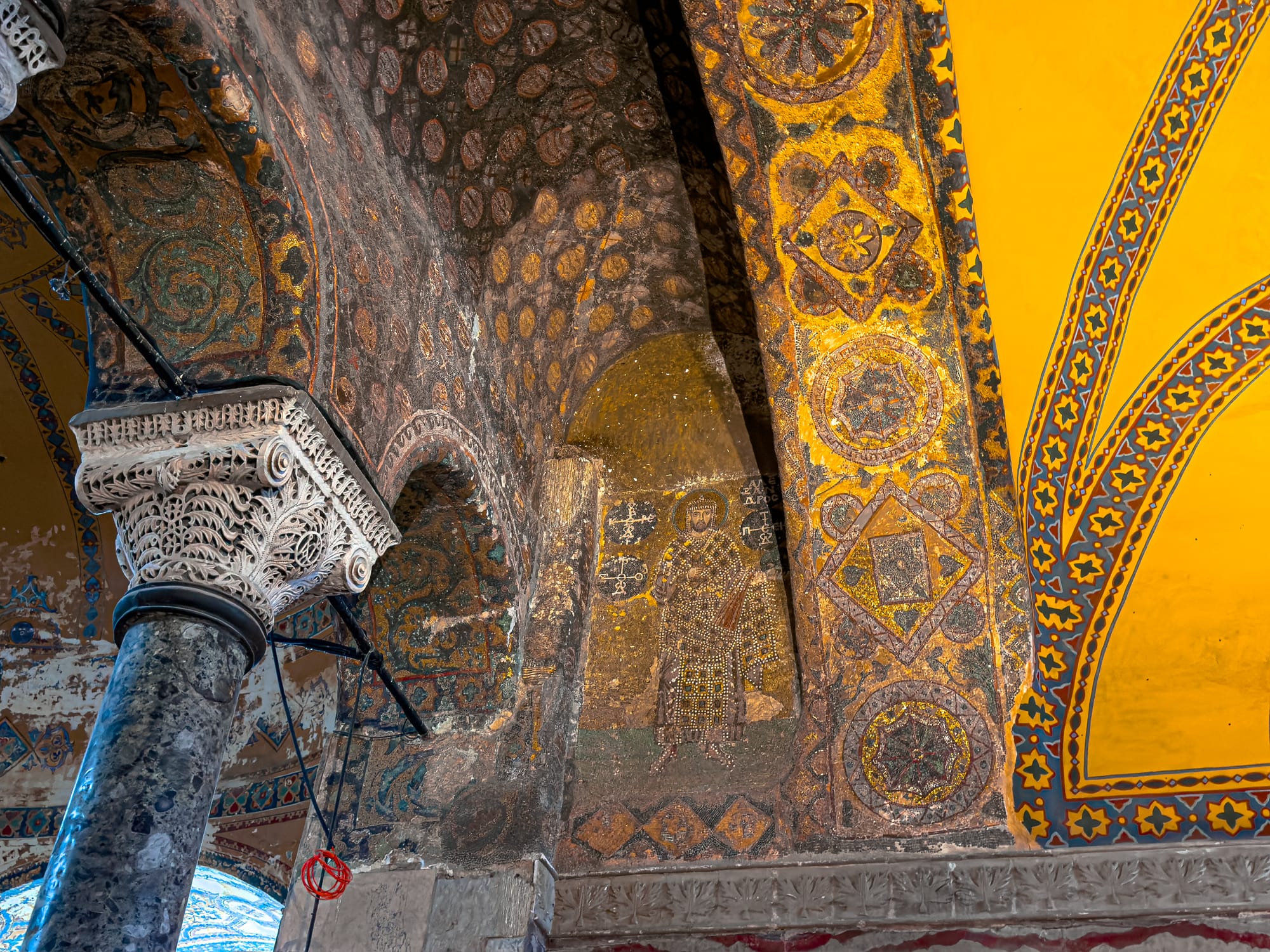
When the Ottomans conquered Constantinople in 1453, Sultan Mehmed II immediately converted the Hagia Sophia into a mosque. This marked the beginning of an Islamic architectural overlay: minarets were added, Christian iconography was covered (but notably not destroyed), and Islamic calligraphy was installed.
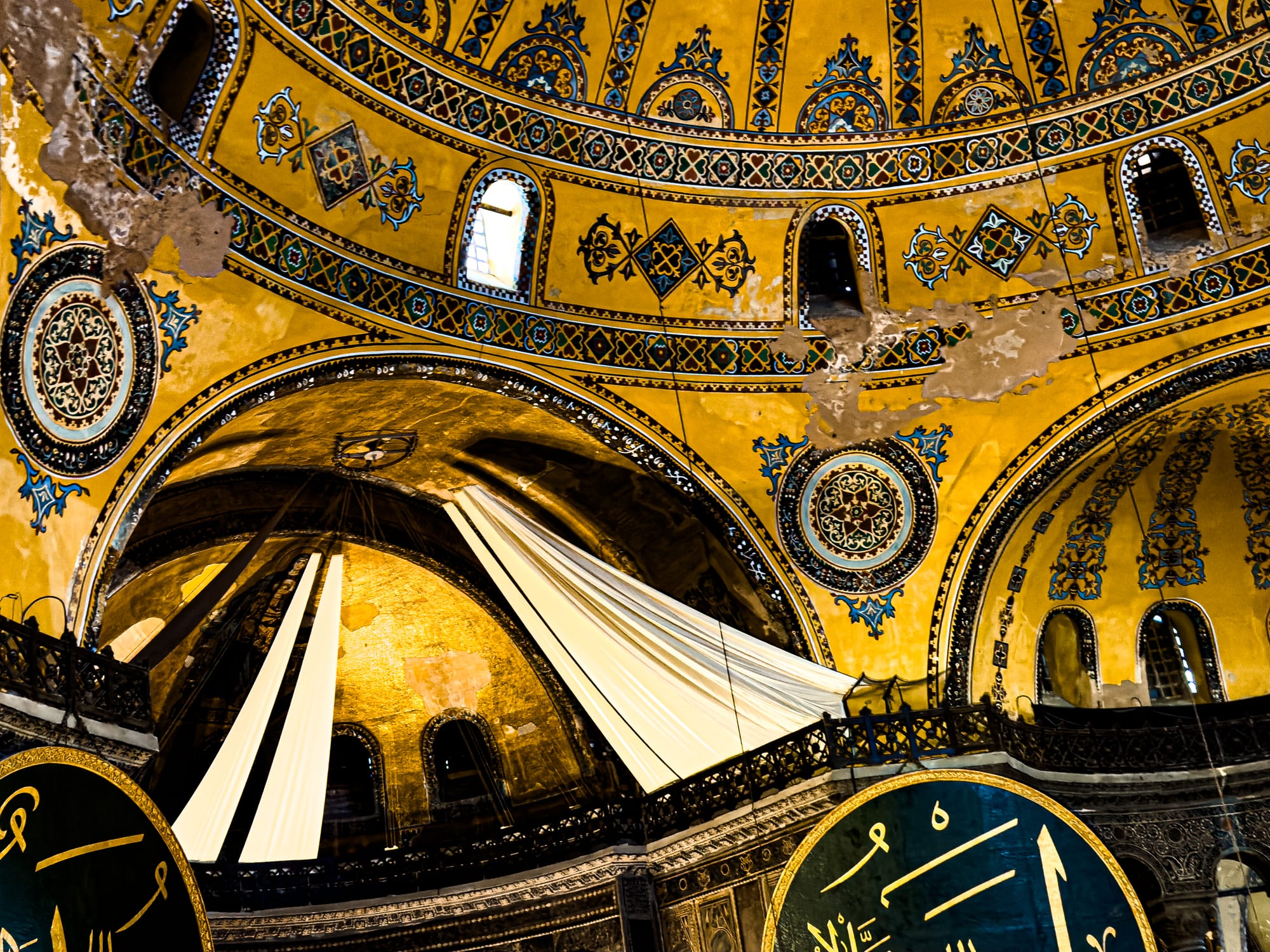
In 1935, the building became a museum—a secular gesture by the Turkish Republic that framed the Hagia Sophia as a cultural monument rather than a religious one. This status held until 2020, when it was converted back into a mosque, a decision that was both celebrated and critiqued depending on one’s political and religious vantage point.
The Dome: an architectural breakthrough
One cannot enter Hagia Sophia without immediately being drawn upward. The central dome, 32 meters in diameter and seemingly floating above the nave, remains one of the most influential architectural achievements in world history. It was a breakthrough in Byzantine engineering, constructed with a ring of forty windows that let in daylight and make the dome appear to glow.
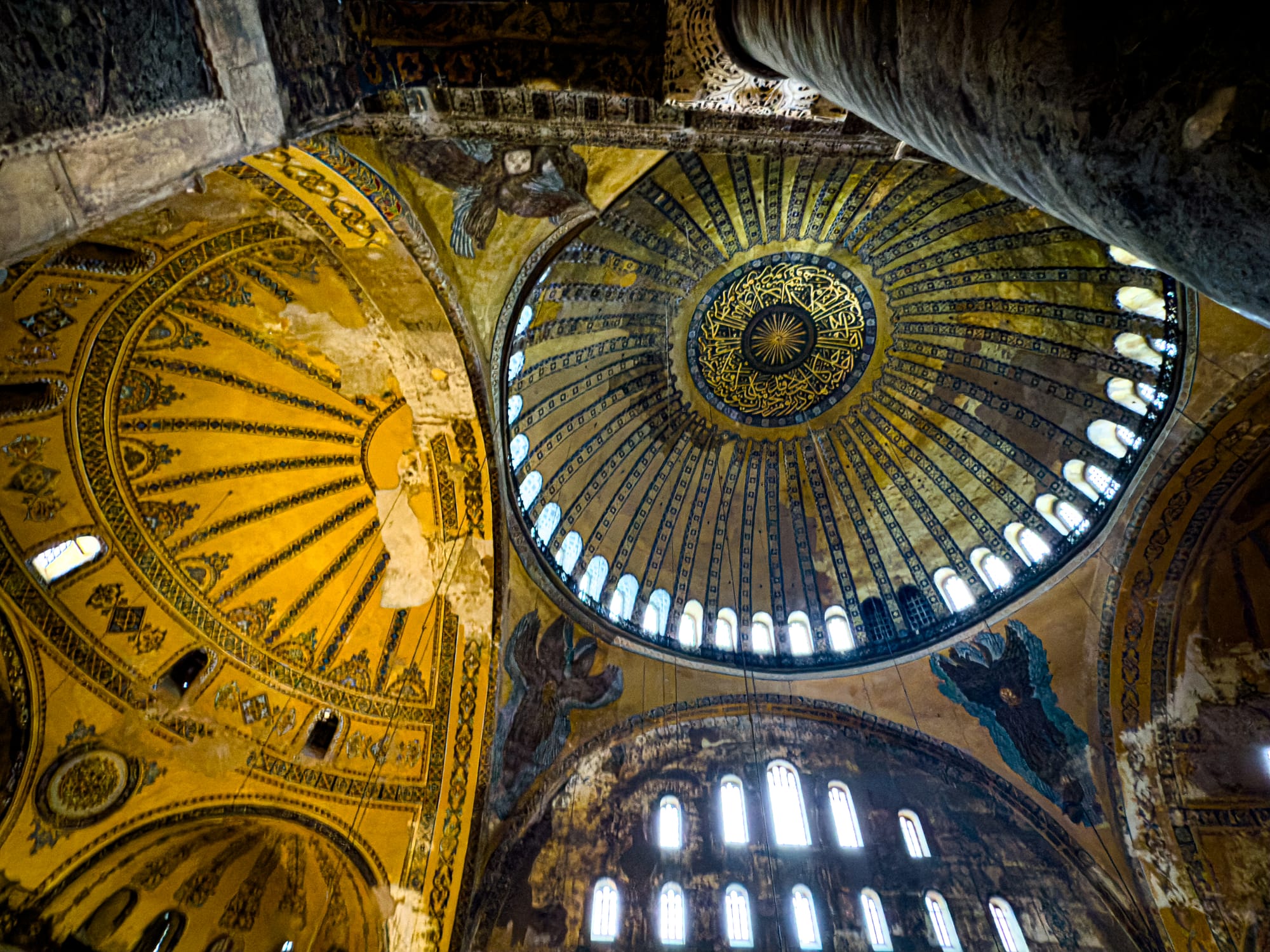
The effect is intentional: in Christian theology, light symbolized divine presence, and the dome’s design was meant to evoke the heavens. Later Islamic interpretations preserved this sense of awe while adding their own theological readings through calligraphy and geometry.
Mosaics and calligraphy: a dialogue across eras
For those interested in visual culture and sacred art, the Hagia Sophia is a kind of time capsule. Some of the most impressive Byzantine mosaics still visible today include the Deesis mosaic (a hauntingly beautiful depiction of Christ flanked by the Virgin Mary and John the Baptist) and the imperial panel showing Emperor Constantine IX and Empress Zoe presenting gifts to Christ.
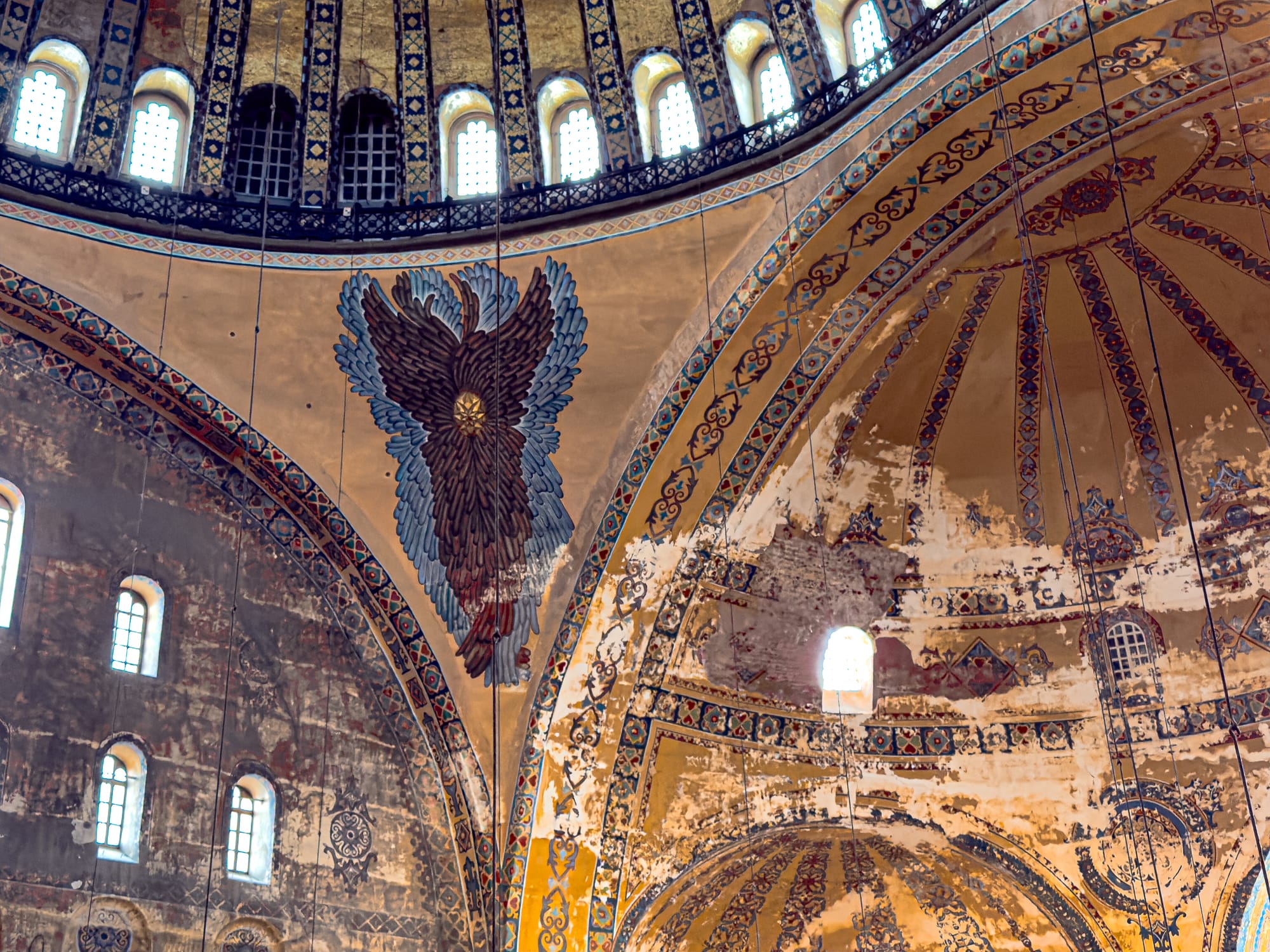
These Christian mosaics coexist with Ottoman-era additions: massive roundels inscribed with the names of Allah, Muhammad, and the first four caliphs. Suspended from the upper galleries, these calligraphic medallions create a striking visual tension with the older Christian imagery, making Hagia Sophia a rare site where two major faith traditions are in visual conversation.
Sound and space
Acoustically, Hagia Sophia is nearly unmatched. The curvature of its dome and the layers of marble and gold tesserae create an ethereal reverb. The call to prayer here resonates differently, echoing against the same walls that once held choral chants and imperial coronations.
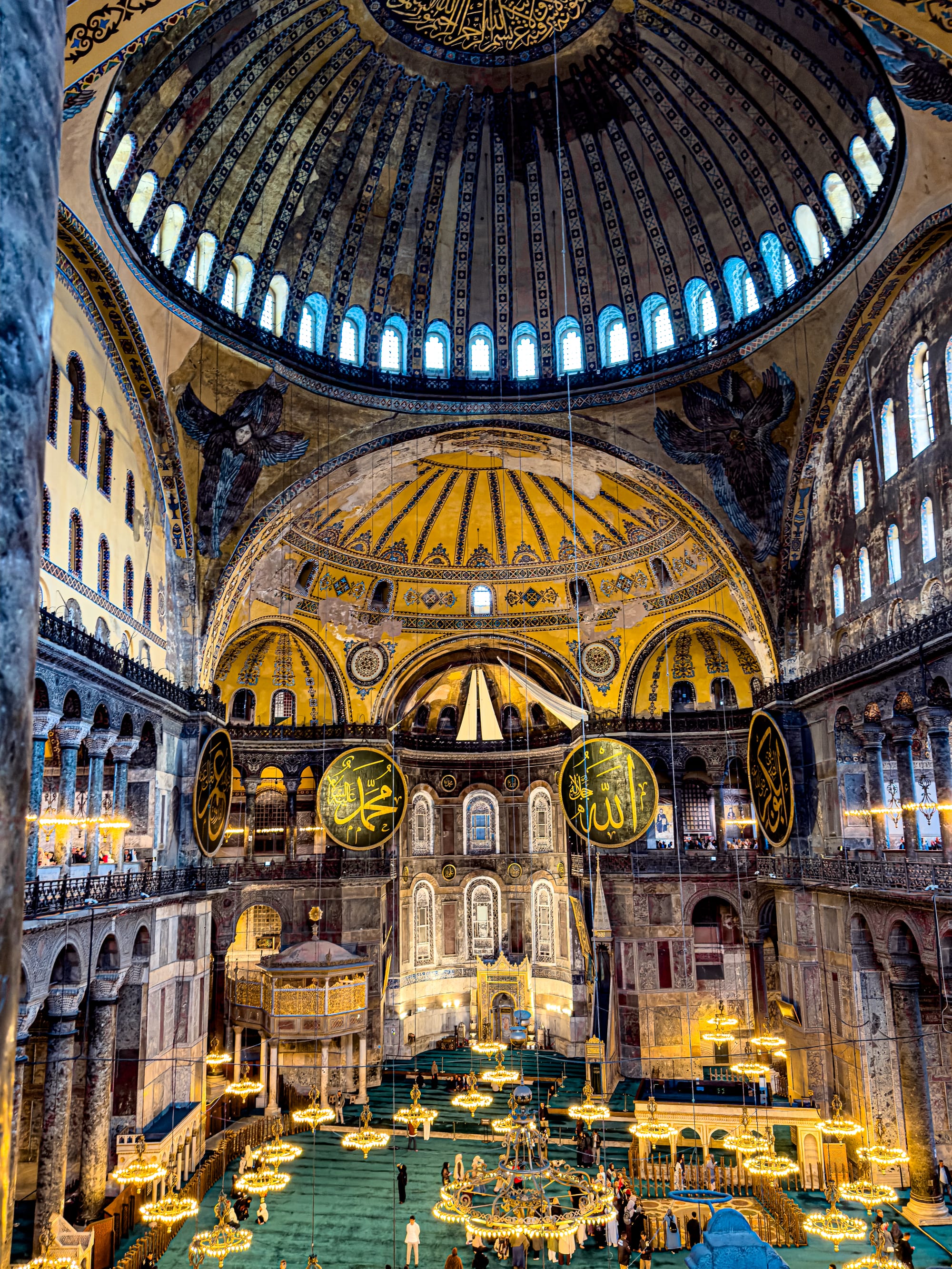
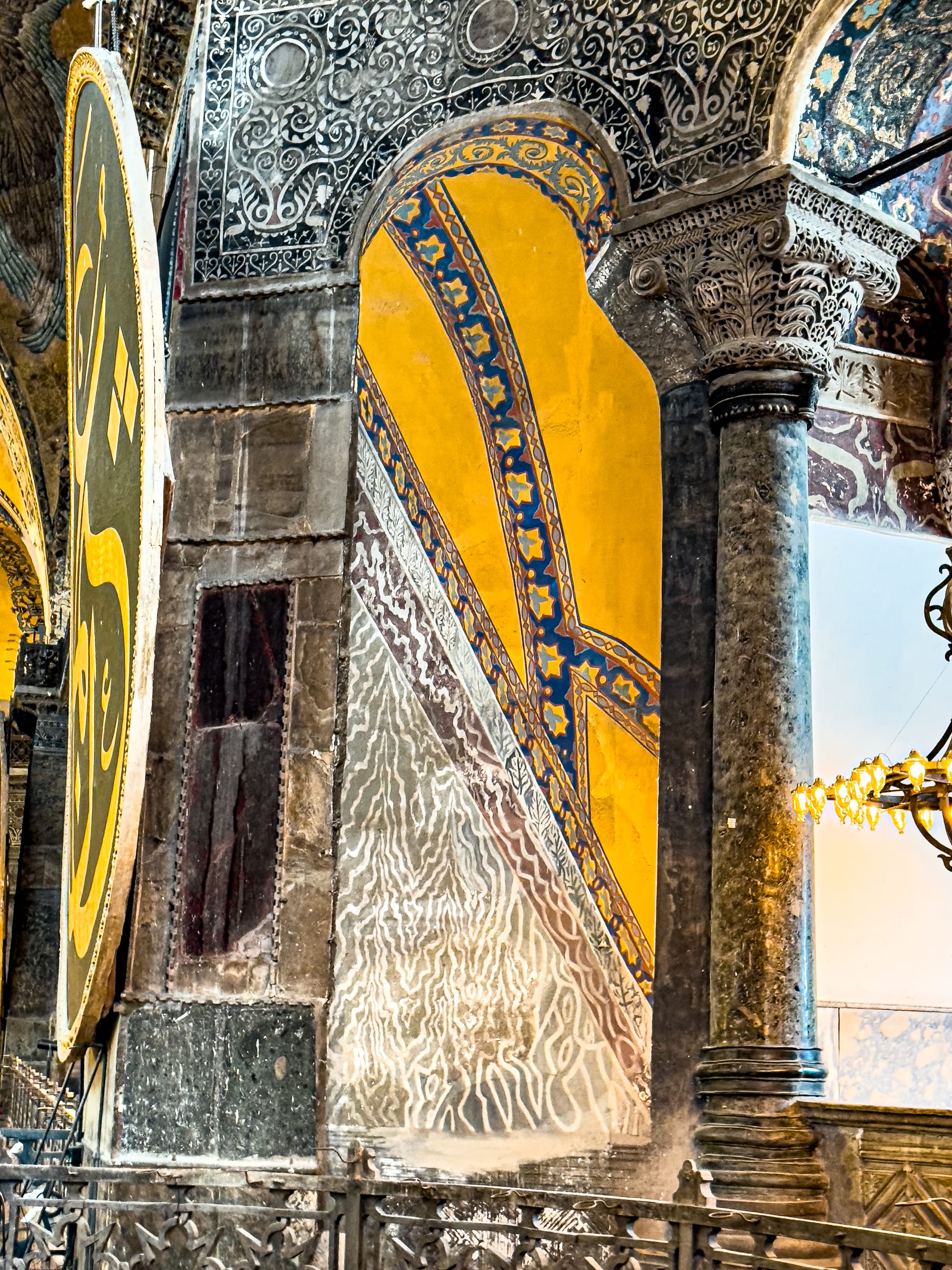
From sweeping domes to layered marble, Hagia Sophia’s interior is a study in architectural grandeur
Even when filled with visitors, there are moments of stillness. Light streams in through the upper windows, dust motes swirling, whispers carrying across the vast marble floors.
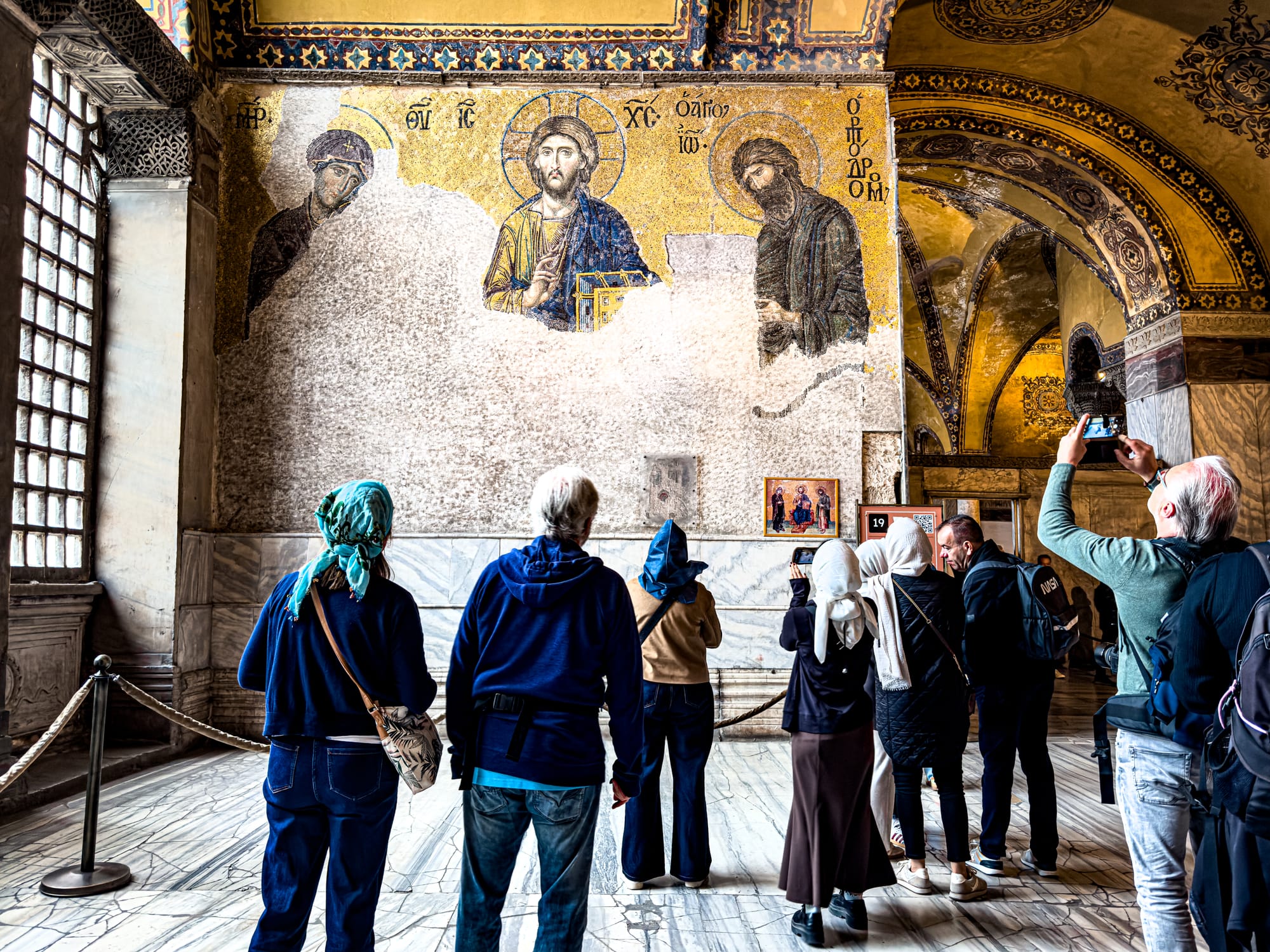
Despite its grandeur, Hagia Sophia holds moments of softness.
Practical tips for visiting
Today, Hagia Sophia is free to enter as a functioning mosque, but there are important considerations. Visitors must dress modestly, remove shoes before entering, and avoid visiting during prayer times if they do not intend to pray. The women’s section is separate, and respectful silence is encouraged.
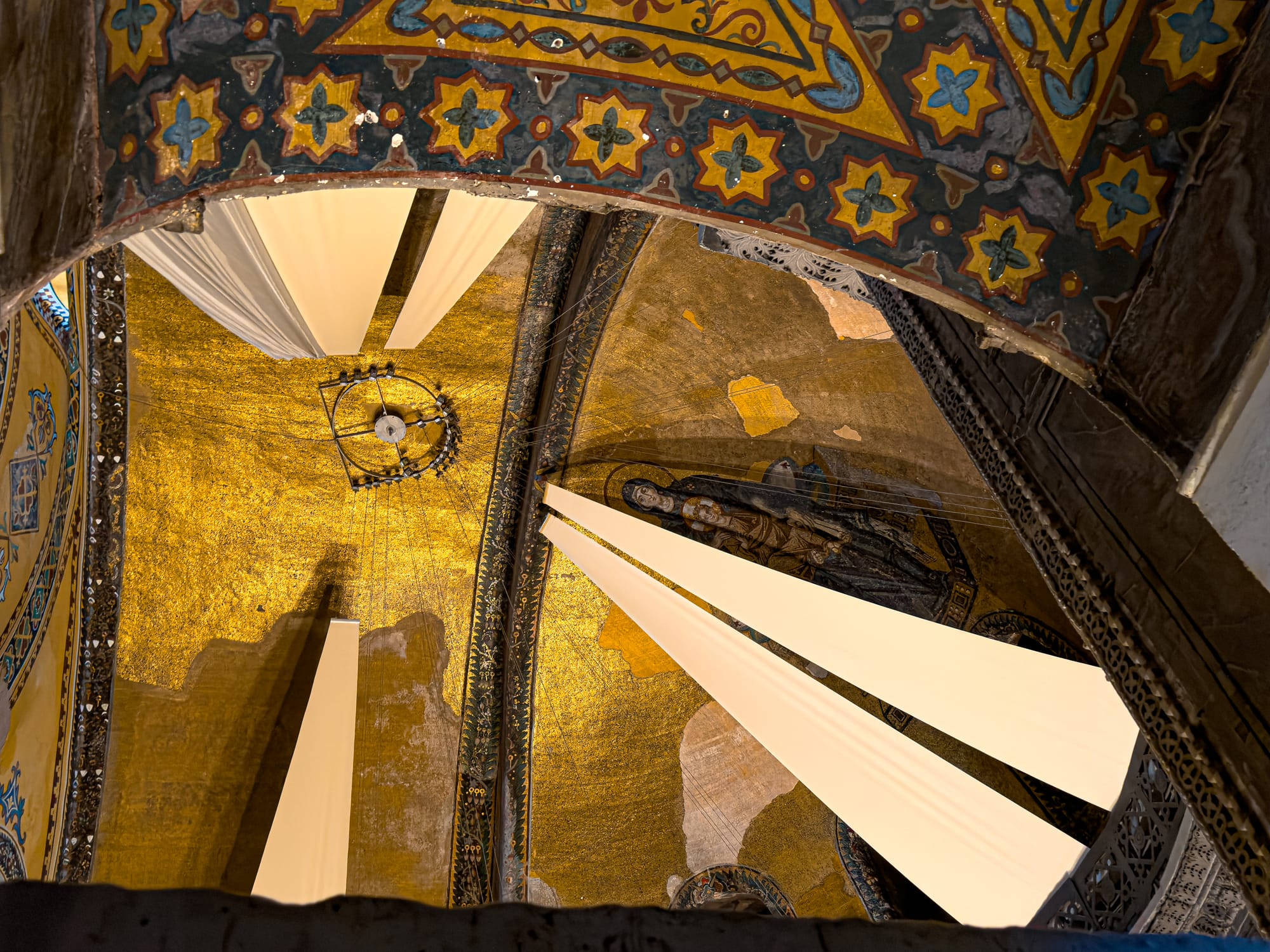
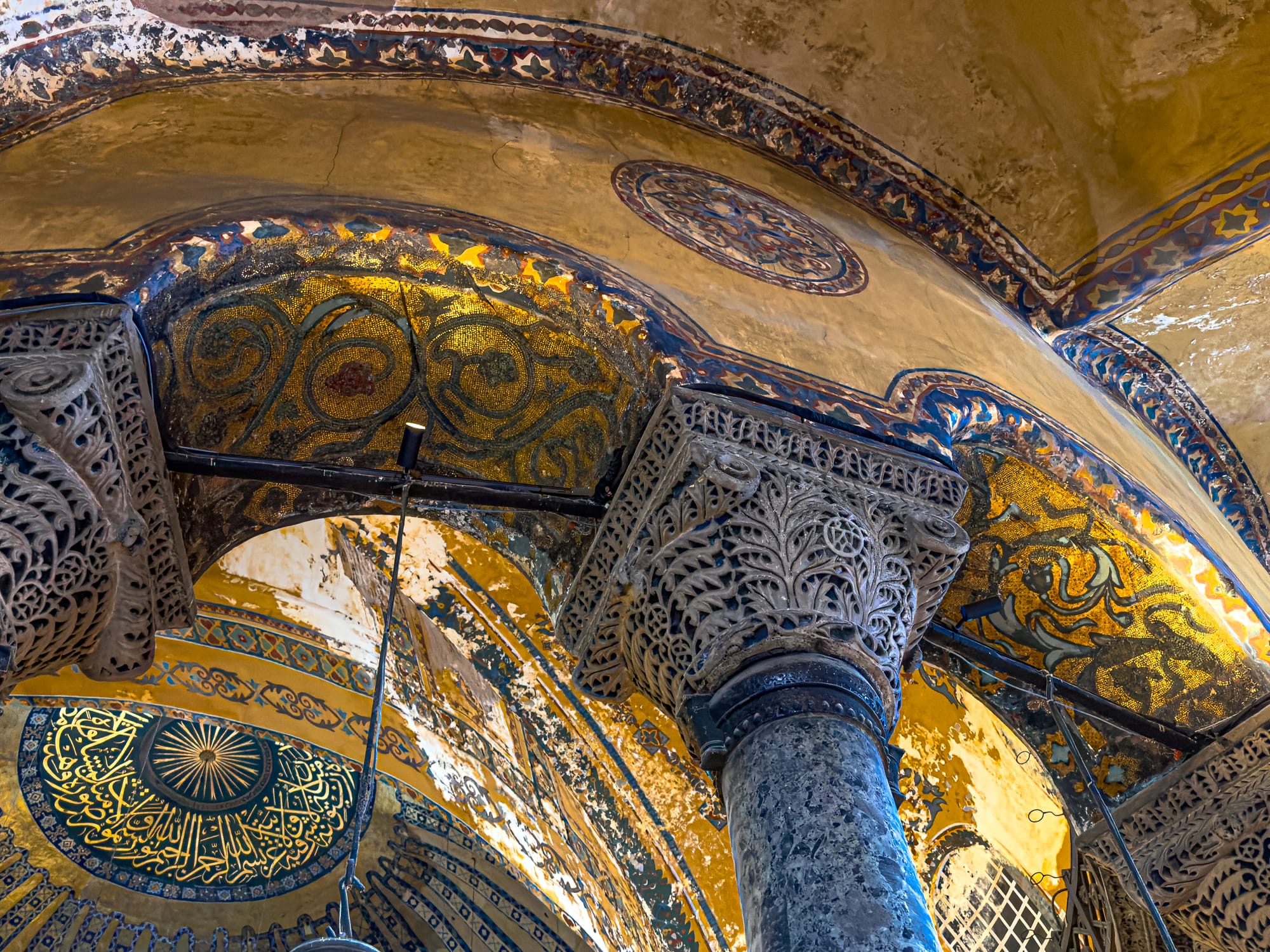
Golden mosaics and ornate columns in Hagia Sophia reveal the layered craftsmanship of centuries past
Non-Muslim visitors are not barred but must navigate the space with care. For those who wish to dive deeper into its history, we recommend joining a guided tour. Alternatively, if you're more independently minded but want to avoid the long lines, booking a skip-the-line ticket in advance is well worth it.






